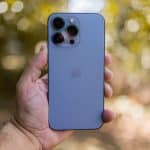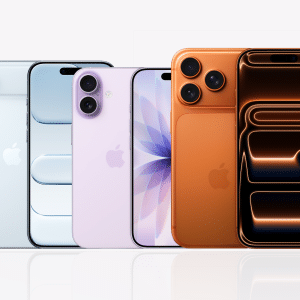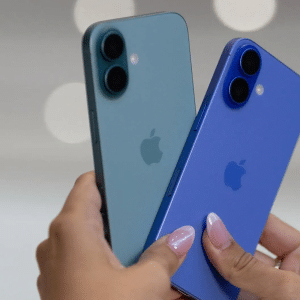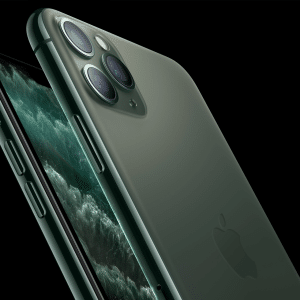Over the last decade, Apple has risen to become the dominant smartphone company in Japan. The technology company has a 65 percent market share in Japan, the highest percentage it has ever achieved in a single country, including its home country, the United States.
Given Japan’s technological prowess, the dominance is as intimidating as it is intriguing. Japan’s reputation precedes it in the domain, having surprised the world with numerous inventions or innovations such as the laptop, pocket calculator, Blu-ray players, and various video game innovations among other revolutionary technologies.
Because of the Japanese people’s preference for their own creations, Japanese products almost always outsell foreign products. This well-known reality begs the question of why Apple so easily dominates Japan’s smartphone market, despite being a foreign entity and Japan’s technological prowess. Here, we uncover the truth hidden within this mystery.

How did Apple achieve such success?
Apple’s success can be traced back to its initial entry into Japan’s mobile phone market. Unlike other markets, Apple entered Japan with a straightforward strategy of disrupting the market. Apple was looking to gain market share by introducing some desired benefits. The initial objective was to fill a quality gap in the existing market.
It all started in 2008 when Apple released the first iPhones in Japan. The phones had 3G connectivity, a rare but desirable feature at the time. The market, at that point, was saturated with models that lacked 3G connectivity and did not support the installation of third-party apps.
Despite the improvements, the iPhones still left a lot to be desired. Users in Japan desired a phone with an infrared port for sharing contact information in person, a good camera for easy QR code scanning, a TV tuner, and NFC for mobile payments. In general, they desired more features and functions than other markets.
Apple recognized this and gradually added the features and functionalities in subsequent models and iOS software. The advancements made them popular among tech-savvy and wealthy users. When its initial carrier partner, Softbank, took over, its popularity skyrocketed even further. The company relied on low prices and aggressive marketing. Masayoshi Son, the CEO, collaborated with his long-time friend Steve Jobs to tailor iPhones to Japanese users’ desires and preferences. Eventually, the iPhone became a must-have item in Japan.

The reason for Apple’s success in Japan
Initially, Apple gained popularity as a result of Softbank’s CEO and his team’s aggressive and astute marketing skills. The ‘iPhone for Everyone’ campaign, among others, fueled the fire. The iPhones also met the desires of the Japanese for simplicity, convenience, attention to detail, and ease of use. Local and international players were dwarfed by the company, particularly their sluggishness in adapting to the isolated market.
Japan gradually transitioned to the smartphone market, where it faced increased competition due to Samsung’s presence in the country. However, Apple’s continued dominance in Japan is arguably due to Samsung’s failure in Japan. Samsung is Apple’s global archrival. The Japanese, on the other hand, dislike the South Korean company and its products.
Anti-Korean sentiment in Japan is at the heart of Samsung’s failure in the country. While the origins are historic in nature, the main crisis began when Samsung violated Unicode. This was incredibly displeasing to the Japanese people. The Unicode standard enables smartphone companies to redesign emojis while adhering to a specific standard to maintain meaning.
Breaking Unicode meant removing all references to Japan and its culture, which angered the Japanese people. Samsung, for example, replaced the Japanese Doll emoji with the Korean Doll emoji. The same thing happened to Crossed Flags, Tokyo Tower, and other emojis, which irritated Japanese users. The outrage has reduced Samsung’s smartphone market share to less than 10%, while Apple’s has increased to more than 60%.

The impact of the iPhone on Japanese society
The iPhone is responsible for the incredible transformation of Japanese society. The first was the introduction of emoji, which significantly improved chatting. It’s no longer difficult to express oneself while chatting. The iPhone facilitated and accelerated mobile payments. Apple Pay can now be used for transit payments, school fees, business transactions, and person-to-person transfers.

More importantly, the iPhone is a must-have for Japanese gamers. In Japan, playing online games on phones has become popular. Over 67 million active players participate in various reputable online casinos. In Japan, more than 70% of players use smartphones, the majority of which are iPhones. Gamers enjoy the authentic experience of using high-quality graphics, excellent battery efficiency, and a vast catalog of fantastic games on the excellent gaming device.
Overall, the iPhone is a near-ideal match for the Japanese smartphone market. Its dominance in the country benefits all users and is unlikely to change anytime soon.











